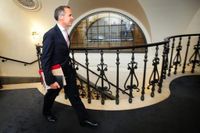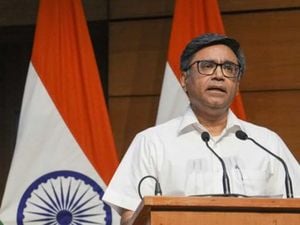Mark Carney, the former public servant who previously led both the Department of Finance and the central bank of Canada, has officially formed his first government as Prime Minister. Announced on March 14, 2025, Carney introduced what his administration called a “leaner, focused cabinet,” filled with key figures aimed at addressing Canadian needs.
The newly appointed cabinet includes François-Philippe Champagne as the minister of finance and Ginette Petitpas Taylor as the president of the Treasury Board. Formerly the minister of public services and procurement, Ali Ehsassi has taken on the role of minister of government transformation, public services and procurement. Notably, Chrystia Freeland, who resigned last December due to policy disagreements with former Prime Minister Justin Trudeau, will now serve as the minister of transport and internal trade.
Additional appointments were made for Dominic LeBlanc, who will oversee international trade, intergovernmental affairs, and serve as the president of the King’s Privy Council for Canada; Mélanie Joly is now the minister of foreign affairs and international development; and Anita Anand is tasked with innovation, science, and industry, having previously held the presidency of the Treasury Board.
Speaking at the Global Government Forum’s AccelerateGOV conference, Anand emphasized the need for comprehensive change, stating, “We need to talk about people, we need to talk about policy, and we need to talk about the accompanying technology.” Her sentiment resonates with the approach Carney aims to encapsulate within his government.
Carney’s appointment as Prime Minister arrives during heightened tensions with the United States, where US President Donald Trump openly expressed desires for Canada to become a part of the US. Despite this pressure, Carney has pledged to prioritize Canadian interests, focusing on creating more higher-paying jobs, forging reliable trade relationships, and ensuring Canada’s security.
To demonstrate his commitment to these goals, Carney announced plans for international trips commencing March 17, 2025, with visits to France and the UK aimed at strengthening economic and security partnerships. Following these travels, Carney will travel to Iqaluit, Nunavut, on March 18, 2025, where he will reaffirm Canada’s sovereignty over the Arctic region.
“Canada was built upon a union of peoples – Indigenous, French, and British,” Carney noted. “My visit to France and the United Kingdom will strengthen trade, commercial, and defence ties with two of our strongest and most reliable partners.” This international outreach seeks to bolster relations with allies and emphasizes Canada’s aspirations on the global stage.
Among his initial actions as Prime Minister, Carney made headlines with the decision to scrap the consumer carbon tax, effective April 1, 2025. He stated, “This will make a difference to hard-pressed Canadians, but it is part of a much bigger set of measures…” This notable move aligns with his philosophy of fostering sustainable choices without imposing new tax burdens on citizens.
The consumer carbon tax faced criticism for not effectively curbing emissions and creating division within the Canadian public. Carney’s administration proposes to replace the previous strategy with incentives aimed at rewarding Canadians for adopting greener practices.
Last week, Carney reiterated his government’s focus on action, saying, “We will be eliminating the Canada fuel charge, the consumer fuel charge, immediately, immediately.” With these decisive movements, he aims not only to address concerns over climate change but also to revitalize the Canadian economy.
Moving forward, Carney and his cabinet face the substantial challenge of balancing environmental responsibilities with economic growth. The laid out appointments and policies suggest they intend to tackle this issue head-on, reinforcing the administration's commitment to delivering on promises made during the election campaign.
With prominent officials leading various key sectors, Carney’s government reflects both continuity and change, aiming to innovate Canada's approach to governance. It’s clear the new Prime Minister has set ambitious objectives but has rallied capable individuals to navigate the path forward.
Time will tell how Carney’s administration will address the dynamic political climate and resonate with the Canadian populace as it strives to meet its outlined goals.





